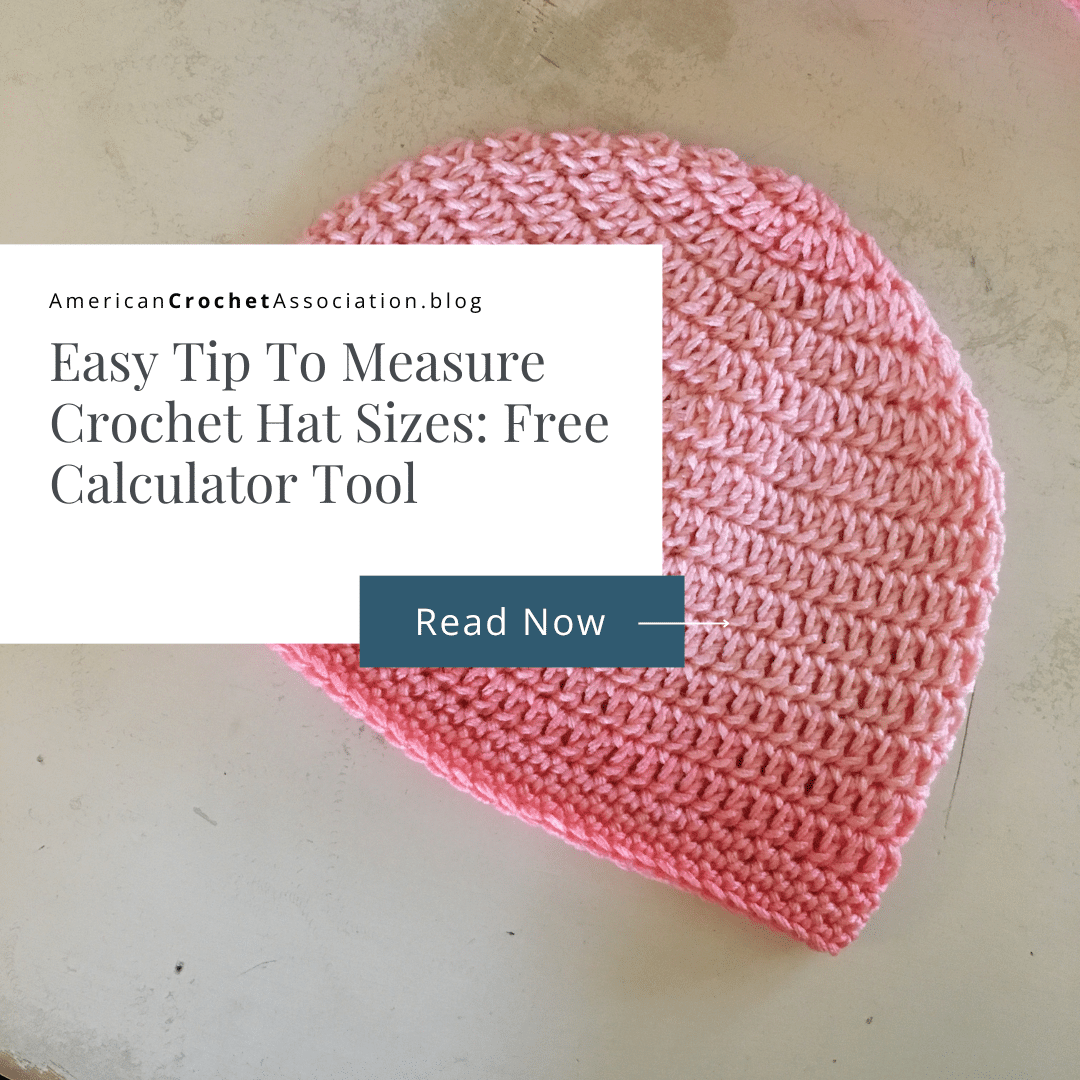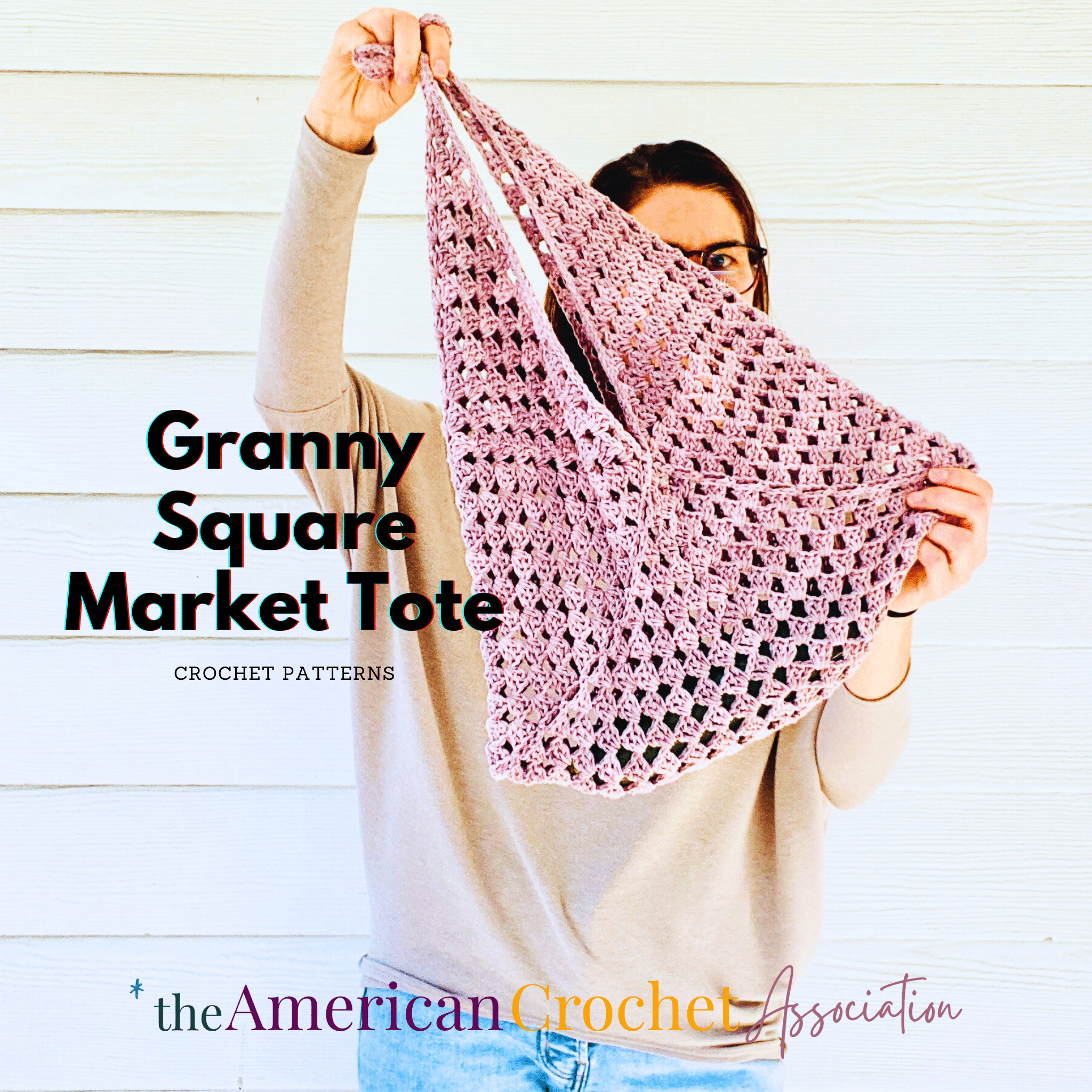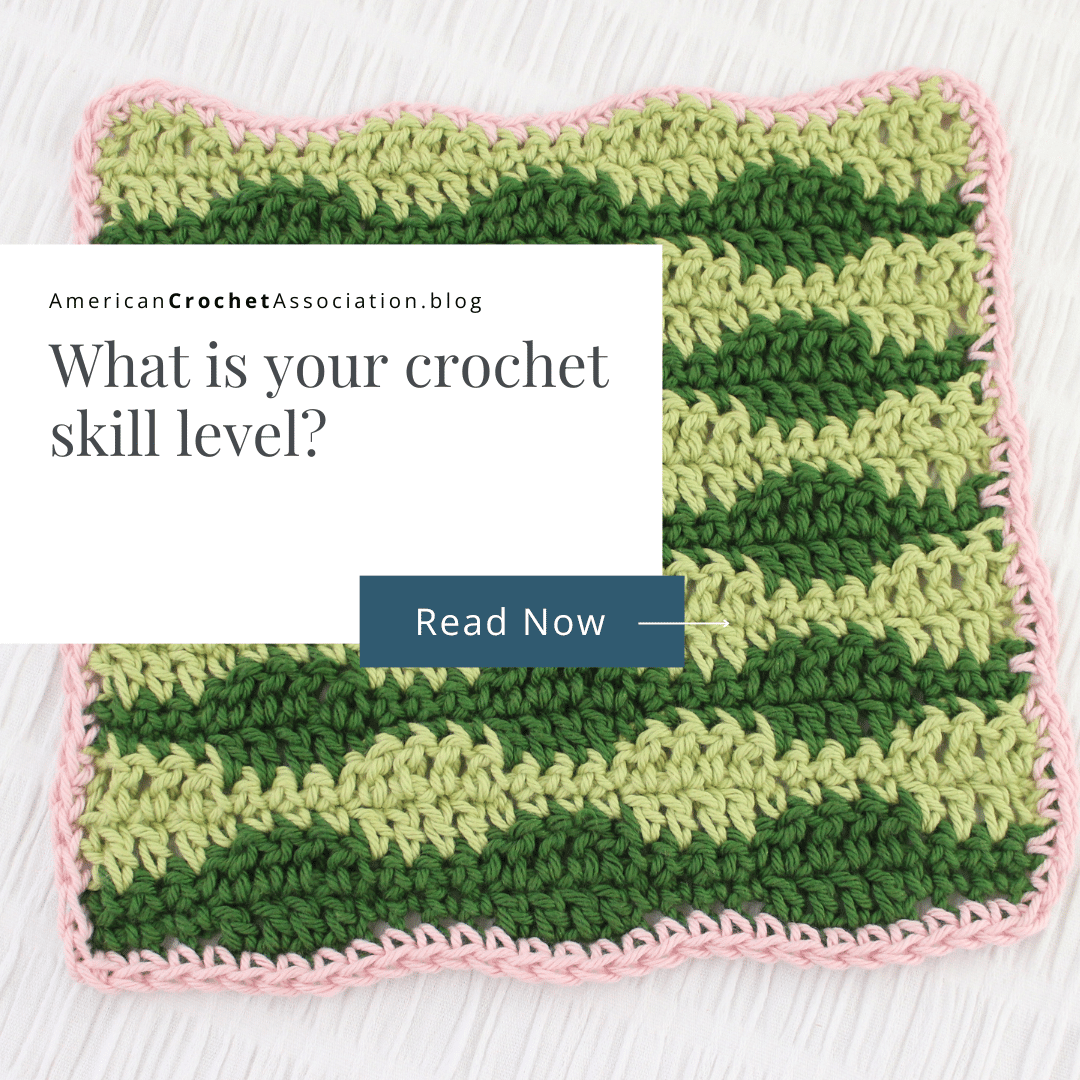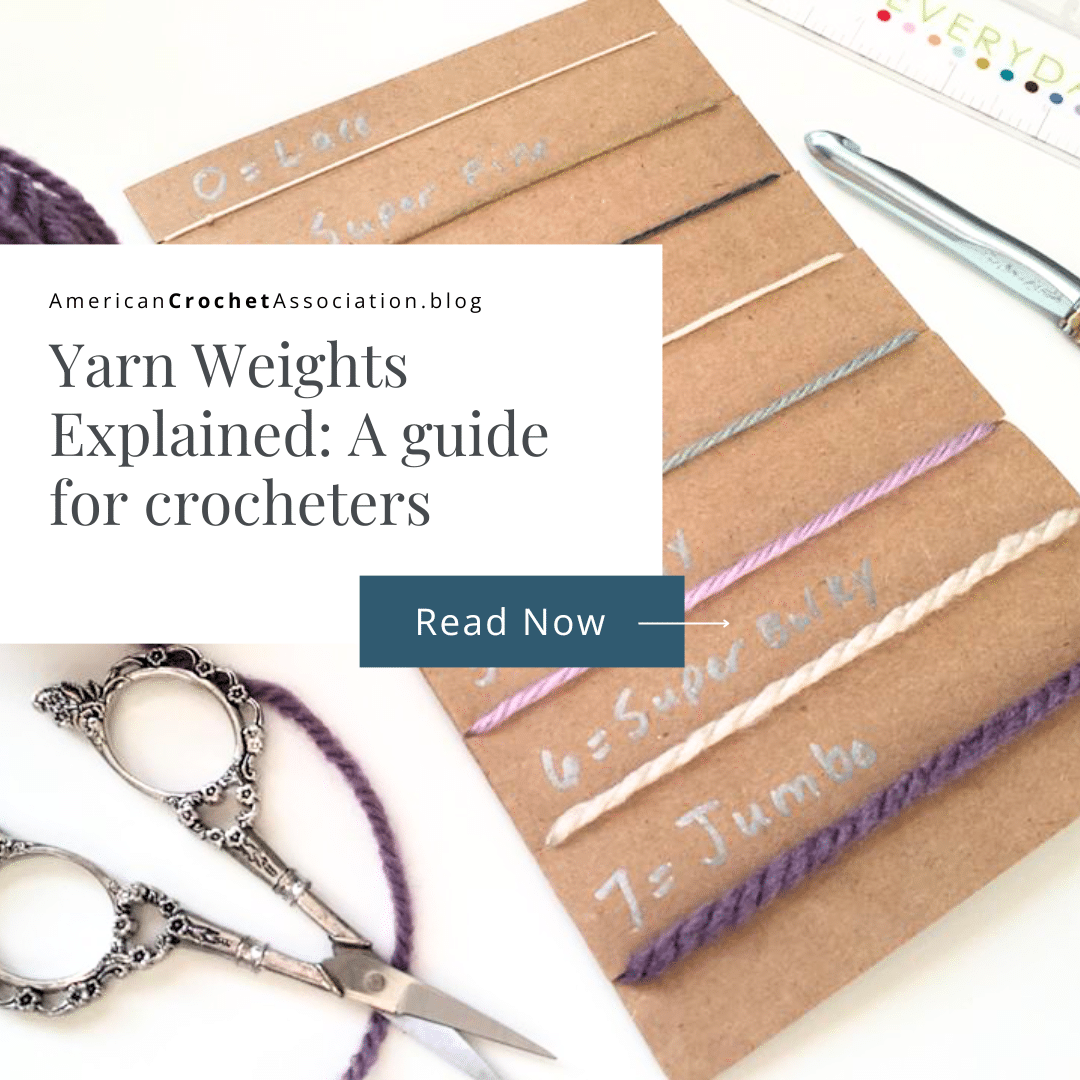If you’re thinking that yarn substitution for a crochet project is anything but easy, you’re not alone.
You might be wondering…
What is substitution?
How do I know I’m substituting yarn the right way?
Can I use acrylic instead of wool?
You’ve come to the right place.
Yarn is very dynamic with lots of characteristics to consider. Therefore, it can’t always be substituted based on a single factor alone (like yarn weight).
It’s not you. Yarn is complicated.
But, with the right questions and resources, you can have the knowledge and confidence to choose the best yarns for any crochet project you make!
Let’s start with the basics.
Table of contents
Estimated reading time: 6 minutes
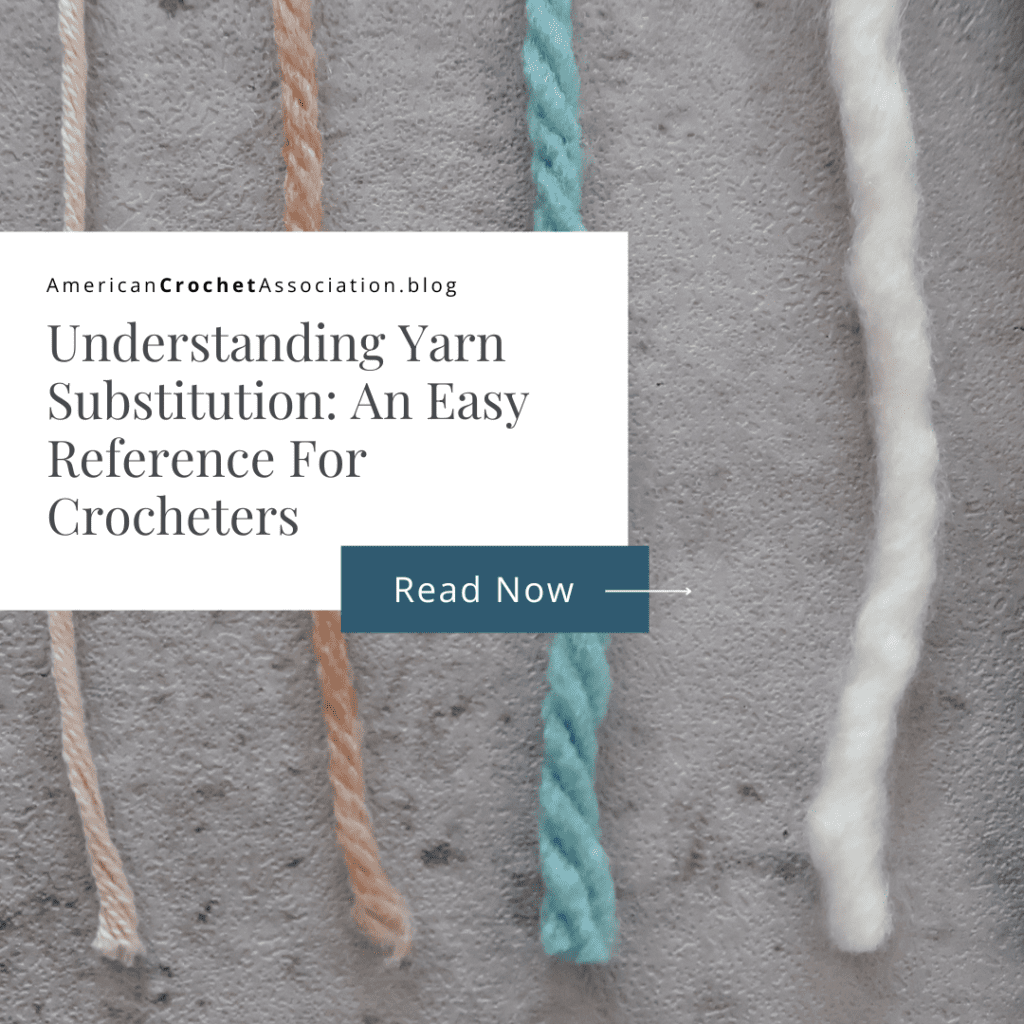
What is yarn substitution?
Yarn substitution is the process of choosing a different yarn than a pattern calls for.
That’s it.
But, the process gets a bit more complicated.
Does yarn substitution matter?
If you’re wondering when and why substitution matters, you’re already off to a good start.
You may not be able (or want) to use the yarn a pattern suggests, so you’ll need to figure out a good alternative.
Therefore, knowing how to choose yarn alternatives is really important to get the same size, function or feel that a pattern intends.
How to choose yarn alternatives?
In crochet, it’s easy to think about yarn first, right?
Yarn is colorful, pretty, and when you’re looking at a single skein you might feel like the possibilities are endless!
But, any given yarn is actually limited to a few characteristics based on things like weight and fiber.
And so, when thinking about yarn consider the finished project first with these three questions:
- Size
- Function
- Feel
These three questions will help you to think about the finished project first, then choose a yarn that has the qualities and characteristics you need.
Yarn and Fabric Size
Size is always a good place to start, and I have an simple way to think about yarn based on size:
Yarn creates stitches, stitches create fabric, and fabric creates overall project size.
When size is important (think fitted garments and accessories), then the yarn size you choose should match as closely as possible to the yarn suggested within a pattern.
There are 8 different commercial weights of yarn:
- Weight 0 = Lace
- Weight 1 = Super Fine
- Weight 2 = Fine
- Weight 3 = Light
- Weight 4 = Medium
- Weight 5 = Bulky
- Weight 6 = Super Bulky
- Weight 7 = Jumbo
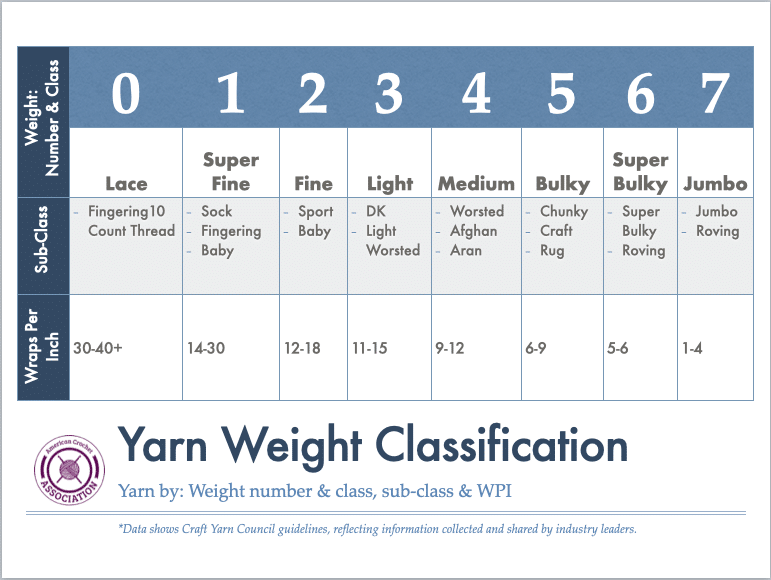
Every weight category has further sub-categories. For example, the weight 4 category includes a few different individual sizes (Worsted, Aran, Afghan) that all work up slightly differently.
CLICK HERE to learn more about yarn weights, and get a handy cheat sheet!
Example
Let’s try an example with a real-life crochet pattern…
Click Here to find the Ombre Beanie Crochet pattern.
This pattern has instructions for 6 individual sizes (14-24”). To create the 22” pattern size, there are a few details to note:
- Yarn weight and type. Red Heart Super Saver Ombre, worsted weight #4 yarn, 100% acrylic.
- Gauge: 14.5 Dc stitches = 4”, 7 Dc rows = 4”
- Hook: US I/9 (5.5 mm)
What are these details?
The pattern writer created a hat, then listed the details of their own specifications so that you can follow their instructions to recreate it.
You’ll have to follow their instructions and specifications to create a specific size.
If you want to use a different yarn than the pattern calls for, your alternative has to also fit the same specifications (same yarn weight, type, gauge).
If you’re still getting a feel for finding good yarn substitutes based on size, try yarnsub.com!
Yarn and Fabric Function
To understand function, think about the intended purpose of the finished project, and what you need the fabric to do.
For example, the Ombre Beanie is something that will be worn and could get a lot of wear! This particular project should function in a few ways:
- Shape: The fabric should hold shape over time, and not stretch out after each use.
- Durable: Will the yarn I chose pill or felt with use? Will friction or sweat degrade the fabric?
- Temperature: Because yarn can be made from plant, animal, and synthetic materials, understanding the characteristics of each can also help to determine fabric function. For example, wool and cotton are breathable, acrylic holds in warmth.
To really understand the type of fabric a yarn can create, work up a small swatch to see how it functions in a particular stitch.
Feeling a yarn in person can give you a lot of clues about the type of fabric it will create, but just squishing it in your hands can be deceiving.
Finally, consider the actual weight of the fabric you create with a particular yarn.
When crocheting the Ombre Beanie, the heaviness of the yarn and material should not be so light that your fabric is too loose and drapey, or so heavy that your hat is uncomfortably dense and stiff.
How the fabric behaves, and whether it fulfills a specified purpose, is function.
CLICK HERE to learn more about how to crochet a swatch with yarn!
Yarn and Fabric Feel
Whether you’re looking to buy towels, a rug, new sheets, or a sweater, you’re going to run your hand over the fabric to see what it feels like.
And, you already have a preference about how each of these should feel: Sheets should not feel like towels, and while a rug can feel like a sweater you might not want a sweater that feels like a rug.
What you think feels best is a personal choice – there are no wrong answers when it comes to what you like!
Use this same thought process when choosing yarn for a project.
but remember, yarn feels differently in the original packaging (by itself) than it does in a swatch or finished project. And, the only way you’ll really know how a yarn will “behave” or feel is to actually crochet with it.
What do I want my finished project to feel like?
Let’s think about the Ombre Beanie for example, but remember that your personal choice may be different than mine.
If I’m wearing the Ombre Beanie the fabric should be:
- Sturdy: Not scratchy or too stiff for the top of your head.
- Soft: Squishy is okay, but make sure the fabric isn’t too stretchy or it will become misshapen.
How can I learn to substitute yarn the right way?
Yarn substitution is something that gets easier with practice, over time.
Before you can substitute yarn like a champ, try some of these tips:
- Learn more about yarn weights and fibers! There is a lot more to yarn than just pretty colors, and the more comfortable you get learning different characteristics the better you’ll become at choosing yarn for a project.
- Practice makes progress, especially when it comes to understanding yarn, and the fabric yarn creates.
- Try a few patterns where size matters, but isn’t crucial, like a Market Tote, Crochet Basket, or washcloth!
And finally, don’t be too hard on yourself – yarn is tricky!
Have fun learning, and don’t be afraid to try new patterns, yarns, and project types to gain experience!
Video Chat
For even more details on this subject, watch my video chat right here:
What do you think?
Let me know in the comments or CLICK HERE to start sharing in our community!
Peace, Love & Crochet –
Salena



